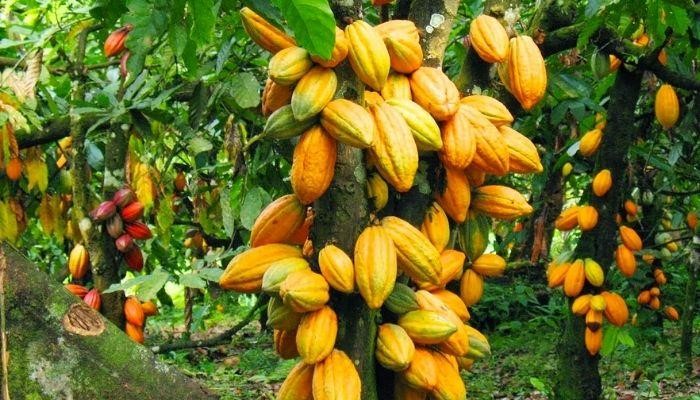Farmers and traders in the country are projecting a boost in Nigeria’s first quarter non-oil export proceeds as the cocoa price, the country’s flagship export crop, hit a record high and surged beyond $10,000 per ton for the first time.
Global cocoa prices have more than doubled since the start of 2024 with no sign of slowing down, as the world faces the worst supply deficit in decades. Farmers in major West Africa suppliers—Ivory Coast and Ghana—are struggling with poor harvests due to poor weather and pod disease outbreaks.
Mufutau Abolarinwa, national president of the Cocoa Association of Nigeria (CAN), said the global cocoa price surge is a blessing to Nigerian growers and will help increase the country’s non-oil exports as the commodity remains Nigeria’s leading agricultural export product.
“This surge will bring more dollars into the country, increasing our revenue from non-oil exports,” he said. He added that cocoa farmers’ earnings are surging at the moment, with their livelihoods positively impacted.
Oba Dokun Thompson, Oloni Eti-Oni, chairman of Eti-Oni Development Group and producer of Gureje IV chocolate bars, said that the skyrocketing surge in cocoa prices would boost the inflow of foreign exchange into the country.
He noted that not only is the commodity a leading cash crop in Nigeria, but it also tops the chart of most exported agricultural products in the country, citing data from Nigeria’s foreign trade in consumer goods report.
Nigeria is currently the world’s fourth largest producer of cocoa, with 280,000 metric tonnes in the 2022–2023 season, according to the International Cocoa Organisation’s latest data on global production, after Ivory Coast, Indonesia, and Ghana, and the third largest exporter, after Ivory Coast and Ghana.
Africa’s most populous nation exported a total of N356.16 billion worth of cocoa beans in 2023, an 18.44 percent increase when compared to N300.71 billion in 2022.
The export of the commodity accounts for 28.72 percent of total agricultural exports (1.24 trillion) in 2023 and 5.6 percent of non-oil exports for the same period.
Locally, prices of cocoa beans are also surging on weaker naira, as a metric now sells for N12 million per metric ton at Matori cocoa warehouse in Lagos as against an average of N8 million per ton in February, indicating a 50 percent rise in prices in a month.
Adeola Adegoke, national president of the Cocoa Farmers Association of Nigeria, said the country will see the same production output in the 203–2024 mid-crop season as against the 2022–2023 season, despite the global price rally.
“We are not expecting a higher output from our 2023–2024 mid-crop season, which accounts for 30 percent of total production,” he said.
According to him, the country is going to see a tremendous increase in its non-oil export proceeds in 2024, most especially during the main crop season, owing to the cocoa price rally.
“But we are now seeing lots of farmers paying more attention to their cocoa trees owing to the recent price surge, and the impact will be more evident in the main-crop season,” he added.
Nigeria has two cocoa harvest seasons, which include the smaller mid-crop from April to June, and the main crop from October to December.
The mid-crop accounts for about 30 percent of Nigeria’s cocoa output, while the main crop accounts for the remaining percentage.
Aside from bringing relief and reward to farmers, the price surge has brought pain to local craft chocolate makers in the country, with most struggling to stay afloat and some shutting down completely.
“It is better to sell cocoa beans right now than process it to make chocolate,” Lawrence Afere, founder of Springboard Farmers’ Co-operative of Nigeria and maker of Tiwa Chocolate.
“How does a chocolate craft maker survive by buying a metric ton at N12 million including all other production costs and still make profits?” he asked.
The International Cocoa Organisation has forecast a global supply deficit of 374,000 metric tons for the 2023-2024 season, a 405 percent increase from a deficit of 74,000 in the 2022-2023 season.

